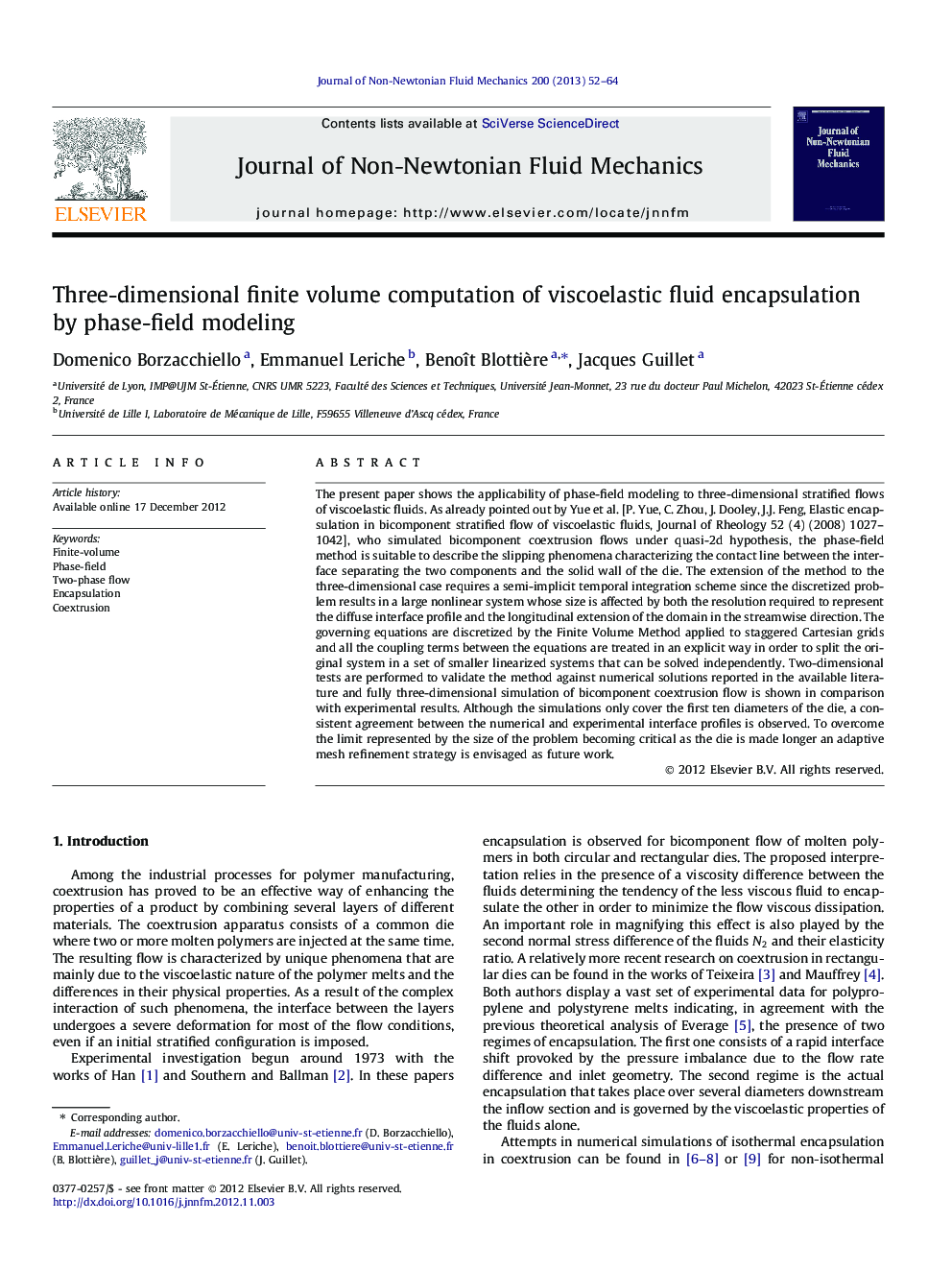| Article ID | Journal | Published Year | Pages | File Type |
|---|---|---|---|---|
| 670726 | Journal of Non-Newtonian Fluid Mechanics | 2013 | 13 Pages |
The present paper shows the applicability of phase-field modeling to three-dimensional stratified flows of viscoelastic fluids. As already pointed out by Yue et al. [P. Yue, C. Zhou, J. Dooley, J.J. Feng, Elastic encapsulation in bicomponent stratified flow of viscoelastic fluids, Journal of Rheology 52 (4) (2008) 1027–1042], who simulated bicomponent coextrusion flows under quasi-2d hypothesis, the phase-field method is suitable to describe the slipping phenomena characterizing the contact line between the interface separating the two components and the solid wall of the die. The extension of the method to the three-dimensional case requires a semi-implicit temporal integration scheme since the discretized problem results in a large nonlinear system whose size is affected by both the resolution required to represent the diffuse interface profile and the longitudinal extension of the domain in the streamwise direction. The governing equations are discretized by the Finite Volume Method applied to staggered Cartesian grids and all the coupling terms between the equations are treated in an explicit way in order to split the original system in a set of smaller linearized systems that can be solved independently. Two-dimensional tests are performed to validate the method against numerical solutions reported in the available literature and fully three-dimensional simulation of bicomponent coextrusion flow is shown in comparison with experimental results. Although the simulations only cover the first ten diameters of the die, a consistent agreement between the numerical and experimental interface profiles is observed. To overcome the limit represented by the size of the problem becoming critical as the die is made longer an adaptive mesh refinement strategy is envisaged as future work.
► We presented a phase-field model for the simulation of bicomponent coextrusion. ► Validation checks are performed against previous numerical solutions. ► Simulations are in consistent agreement with experimental results.
